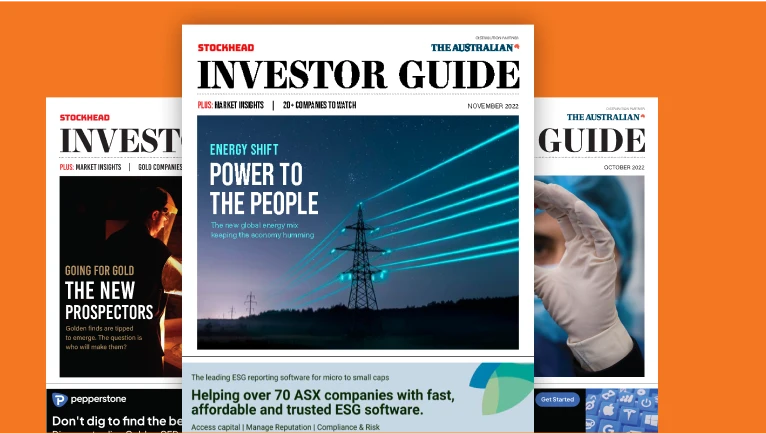Counter Cycle: ‘Sex and violence’ in the US could turn into gold for resources stocks

Sex and Violence. Is it good for resources? Pic: Supplied/Stockhead
Welcome to Counter Cycle with Nero Resource Fund founder and co-portfolio manager Rusty Delroy, a Cottesloe-based fund manager who has developed a reputation for taking the path less travelled in his investments.
Today, Delroy talks how Trump’s tariff policies could trigger a long-term swing back into resources.
Contrarian fund manager Rusty Delroy says he’s growing more confident that the investor love-in with ‘growth story’ US equities will give way to a move back into resources and energy as “sex and violence” consume the US economy in the wake of Trump’s tariff mania.
The tech-heavy Nasdaq 100 has slid close over 7% this year, with the S&P 500 down around 6%, both rebounding from far more bearish positions in recent days as Donald Trump and his team softened their stance on a trade war with China and walked back talk of shafting US Fed Reserve chair Jerome Powell.
But volatility has remained the name of the game in 2025, with Delroy saying investment flows are going to get more diverse.
“That to me is the big picture thing that’s playing out. There’s lots of sex and violence all around that, but we’ve had an extreme concentration in US dollar and US equities globally and I think that’s now changing,” Delroy said.
“It doesn’t mean that the US is handing the baton over tomorrow to anybody else or that the reserve currency status is no longer, it just means that it’s not as strong as it once was.
“I expect that to continue to evolve and if anything what’s happening now is accelerating that process and the US telling people in many ways you can’t trust us like you thought you could.”
Around 75% of the Morgan Stanley Capital International World Index is concentrated in North American equities, a positioning Delroy says “doesn’t make sense”.
“I think there is a fragility to these sorts of geared and extreme concentrations that are progressively having to unwind. We saw it in August last year as well, it’s almost like the butterfly effect,” he said.
“They had this tiny thing and it’s very hard to pick what it is, but you had the 25bps rise in the interest rate in Japan, and as a result global markets absolutely cratered.
“Now that was a knock on effect and I think it’s because of these hyper concentrated, very stretched positions, and I expect those to continue to unwind as change occurs.
“The tricky part is that what the new administration in the US is doing is a lot of change all at once. And that’s really hard for markets to stomach.”
The optimism for resources
Trump last week indicated another 90-day pause on ‘reciprocal tariffs’, supposedly to allow negotiations to take place with affected trading partners, was ‘unlikely’.
Delroy says that unlike Trump 1.0, the performance of the US stock market was no longer the President’s key barometer of economic performance. That means they could be prepared to accept some pain to achieve outcomes that would make US manufacturers more competitive.
“I think ultimately there are some limitations to how much pain either side can tolerate,” he said.
“And so there are some natural places I think that the relationship should move to, and I think, as long as that doesn’t go to a disorderly place in which all bets are off and we’re in a global recession, then ultimately it should result in a lower USD, lower 10-year yield in the US and lower oil price.
“And also a lower concentration of capital in US equities. And I think that’s the real important one for us in resources land.”
An unwind in capital from US equities means it needs to placed somewhere, and Delroy believes hard currencies like gold will benefit. While initial fears about commodity demand may be negative in the short-term, in the long-term investment flows should head into emerging markets where consumption is more commodity intensive.
“Our fundamental view here is it remains very volatile, very challenging. But ultimately this is the key, this unwind of concentration of capital in the US is the key first domino to fall towards something that is very beneficial towards commodity prices,” he said.
“It would have been worse for commodities over the medium and longer term if the status quo had just prevailed and the US had just kept kicking the can down the road fiscally.”
There remains the prospect that things get worse before they get better. But the need to pull hundreds of millions out of poverty in Southeast Asia and India means commodity demand will increase from those centres over the medium and long term.
“It depends on how long your time horizon is in the investment that you’re making,” Delroy said.
“I would argue you can buy any number of equities today at valuations that reflect very, very soft commodity price assumptions.
“Maybe they get cheaper again, maybe things get worse in the short term. That’s all possible.
“But I’d say here and now there’s clearly deep value with anything beyond the 12 month view. So if you can stomach that volatility and risk in the short term, I think you’ll get rewarded.”
Which commodities and stocks does Nero favour?
The obvious pick is gold, which is “playing out in front of our eyes”, Delroy says.
But with gold at close to US$3300/oz it’s “no rocket science” to be positioned there. Delroy is looking looking closely also at commodities where prices are deep into the cost curve.
They include met coal and thermal coal, where markets are well supplied in the short term but equity valuations “aren’t demanding”.
Nero likes the long term dynamics for copper, but it’s harder to find cheap valuations in the heavily hyped space. Nickel is also a commodity deep in the cost curve, though Nero is staying away from higher cost Australian players, most of whom have shut mines in the past two years.
Nickel Industries (ASX:NIC) however, the ASX listed player with a major production base in the world’s top nickel producing country Indonesia, is one on Delroy’s radar.
“You can go buy Nickel Industries as an equity example, I think that’s a world-class business with an extremely long operating future ahead of it at the right end of the cost curve, and you can go buy that at 50% of what you were paying for it a number of months ago,” he said.
The views, information, or opinions expressed in the interviews in this article are solely those of the interviewees and do not represent the views of Stockhead.
Stockhead does not provide, endorse or otherwise assume responsibility for any financial product advice contained in this article.

UNLOCK INSIGHTS
Discover the untold stories of emerging ASX stocks.
Daily news and expert analysis, it's free to subscribe.
By proceeding, you confirm you understand that we handle personal information in accordance with our Privacy Policy.








